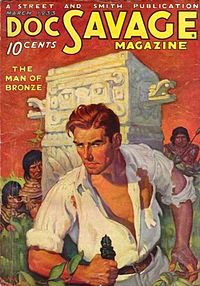I know!
Who would have thought I'd still be alive after all I've been through! Well, I personally haven't been through a lot, but the books I've read have taken me on quite the journey, and I lived to tell about it! I have lived my life in two parallel universes--one in the real world working a job and raising kids, and one immersed in strange worlds, talking to dragons and fighting the good fight.
My parents were a bit eccentric. (Understatement of the year.)
Dad thought we should read what ever we want to read and of course we wanted to read what Dad read, so my sister and I cut our reading teeth on E.E. 'Doc' Smith's Lensman Series.
This presented a problem at times in elementary school when we brought the book we were reading and it was deemed to be 'lurid and unsuitable' by our teachers, frequently with negative consequences. My sister's teacher went so far as to tell my mother, "A third grader should not be reading such trash!" My mother's response was that children should read whatever they wanted if they understood the words.
The series begins with Triplanetary, two billion years before the present time. What a great notion THAT is! The plot devices developed in this series of serialized tales forms the core of what we think of as traditional science fiction. George Lucas liked it so much he used it in Star Wars.
The other great influence on what I instinctively thought of as 'Literature' was written by Lester Dent -- yes folks, my sister and I adored 'Doc Savage'.
Clark Savage (or "Doc" to his friends), had no special powers, but was raised from birth by his father and other scientists to become one of the most perfect human beings in terms of strength, mental and physical abilities. Oh yeah! Prime reading for a ten-year-old!
Then, holy-what-the-heck! My sister, Sherrie, and I discovered Fritz Lieber! That is when we really got into trouble.
Swords and Deviltry was first published in 1970, by Ace books. One of the true pioneers of the genre of epic fantasy, Fritz Lieber originally wrote the three main tales that comprise this book as short-stories for several now defunct Science Fiction and Fantasy magazines, with ‘Induction’, appearing in the 1957 collection ‘Two Sought Adventure’ which was later expanded without ‘Induction’ as ‘Swords Against Death’. In ‘The Snow Women’, Fafhrd is introduced as a young barbarian of eighteen years who is still living in his mother’s tent. More than anything he wishes to see the world, and longs to hear any news of ‘civilization’, and especially the fabled city of Lankhmar. Fearing the dark magic of his mother and obsessed with the need to see the world, a series of events leads Fafhrd to abandon his wife, whom he marries as a last defiant gesture simply because she is carrying his child. The curses of his Mother and his spurned wife follow him.
After Fritz, we discovered Anne McCaffrey (do you hear the angels singing?)
And Heinlein!
And Tolkien!
A great book must have a great plot. It must have compelling characters, who are a bit larger than life. The worlds it is set in must be vivid and colorful! Don't give me a rehashing of J.R.R.--take me someplace new and wonderful and introduce me to new people. Take me into your mind!
Having spent my formative years fighting with my sister over who got to read dad's Analog first, and having eagerly shared every crumb of any book, from Tolkien to McCaffrey to Heinlein with her, my notion of what constitutes a good tale was formed.
So now you know the underpinnings of my lust for literature-of-the-fantastic variety. I suppose it is clear where my love of swashbuckling bad-boys and bold women originated. And I thank you all for giving me the opportunity to talk about that love here!


















